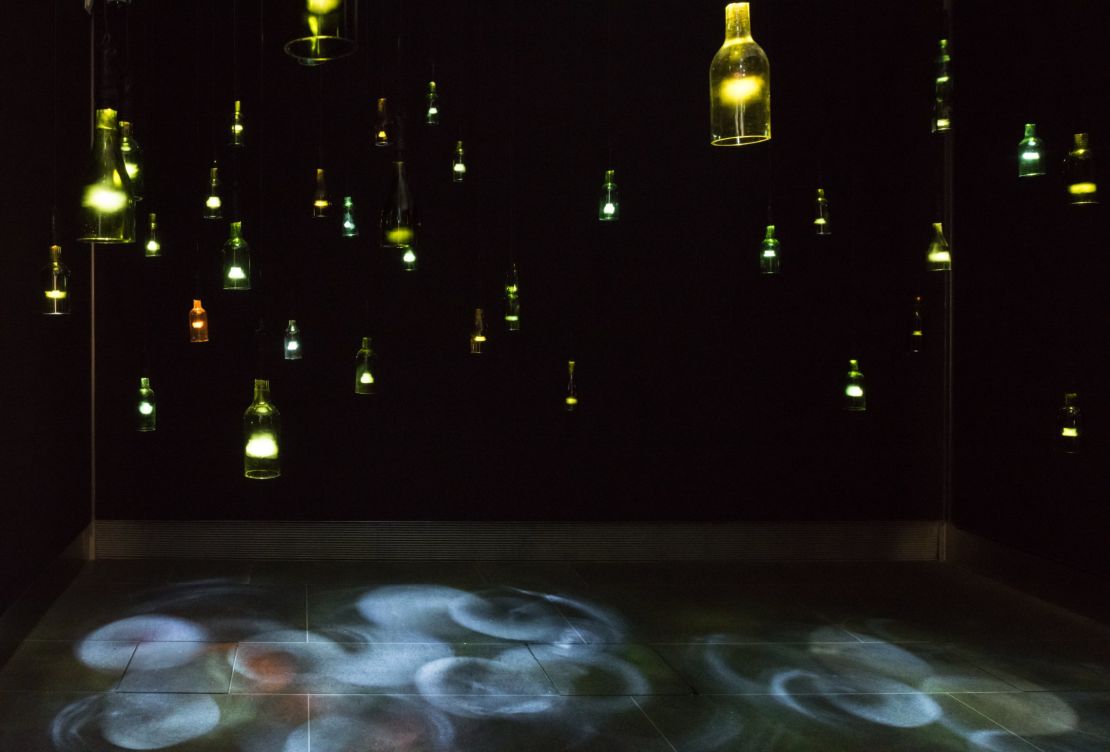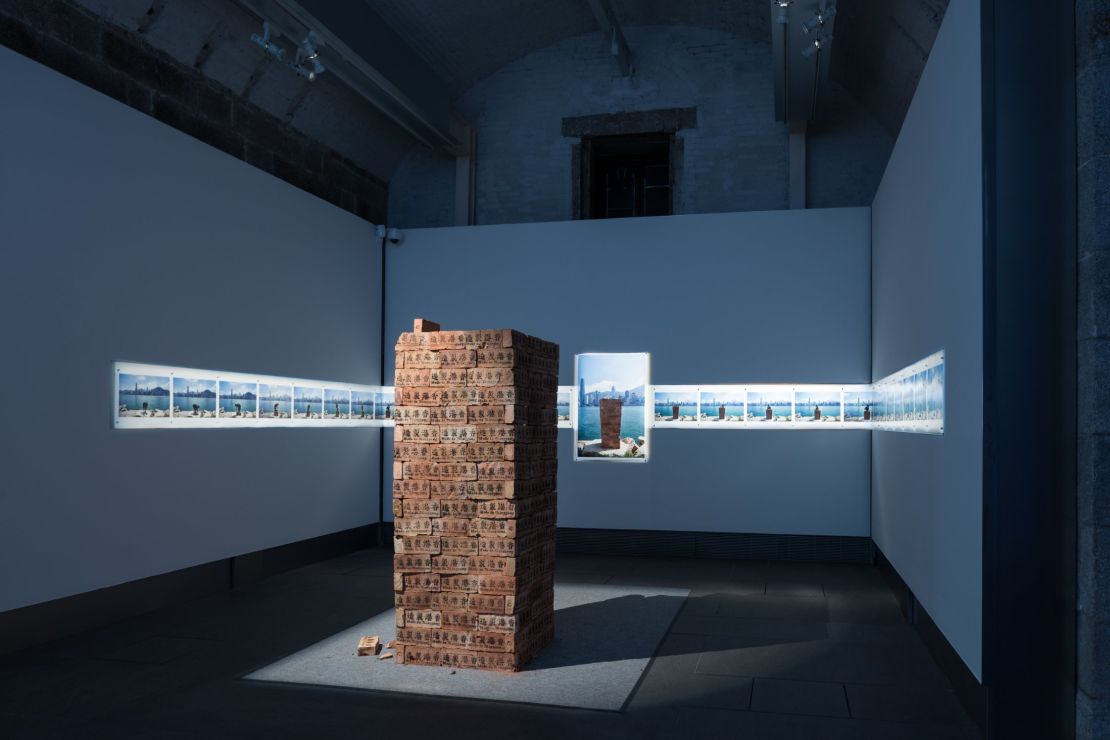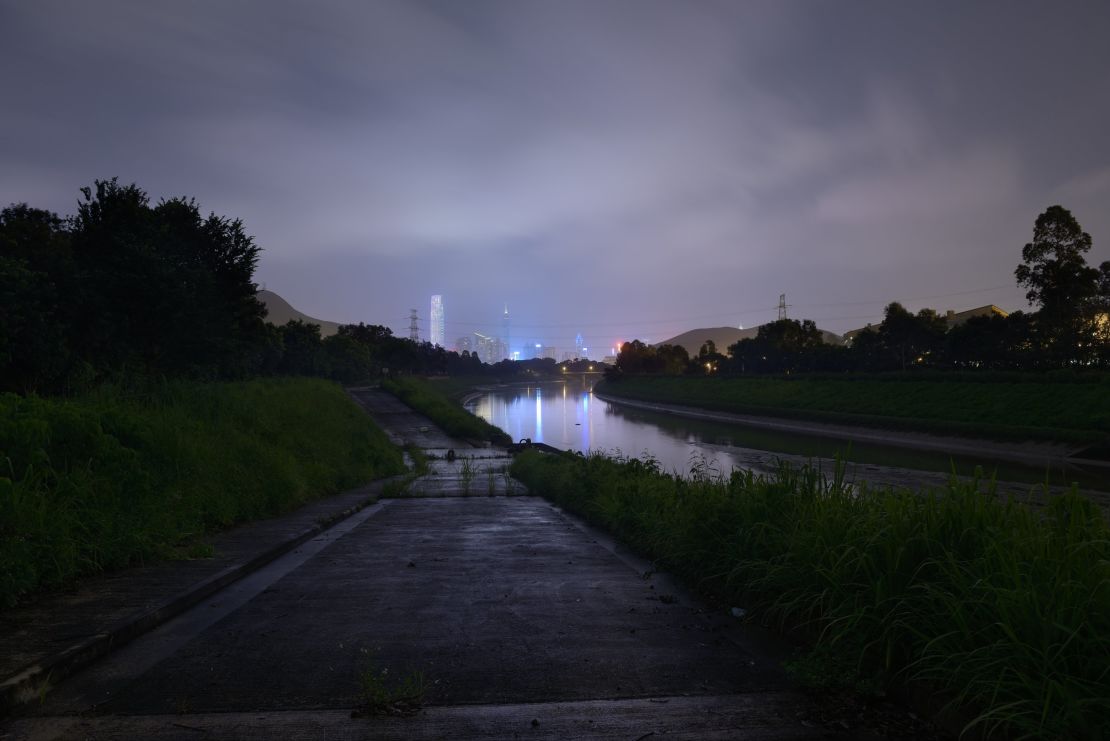Twenty years ago this July, Hong Kong – a historical anomaly, a tiny territory crammed to the brim – was transferred from British to Chinese rule, thus ending a century and a half of colonial rule and posing a set of questions that have yet to find satisfactory answers: Who are we? What is the meaning of this land?
For Hong Kong’s seven million residents, shoehorned into one of world’s densest concentration of high rises, these questions are literally concrete: As our flats shrink, where will we live?
In “Breathing Space,” a new exhibition held at the Asia Society Hong Kong, 11 local artists’ works revolve around the theme of restriction, and what many residents perceive to be both diminishing physical space and political freedoms.
The show, chief curator Dominque Chan tells CNN, comes at an especially pivotal juncture in the story of the city.
“At this moment in time, we cannot avoid all the current affairs, or the space issue, the housing issue in Hong Kong,” Chan says. “I think these artists belong to the younger generation that really wants to push for social change.”
Breathing Space
In a rare treat for the artists, the show sprawls across the Asia Society’s lush, centrally-located hillside campus, a far cry from the cramped warehouse galleries where one usually finds socially conscious artwork in the city.
But indoors in the darkened gallery space, one gets a feel for the claustrophobia often characteristic of Hong Kong living. The opening act: Cheuk Wing Nam’s room of whirling mechanical “moths” trapped inside glass bottles, creating a shriek that’s part wind chime, part metal grinder.

In another drab, windowless corner buzzes Ko Sin Tung’s neon installation reading “spectacular sea view” – a rueful spin on a real estate catchphrase associated with multimillion dollar apartments.

Others confront Hong Kong-China tensions head-on. In one of the most pointed of works, artist South Ho stands before a sparkling Victoria Harbour while building a phone booth-sized wall around himself, brick by brick. The mixed media installation is a commentary both on shrinking physical space and on local Hong Kongers’ anxiety over the influx of mainland Chinese influence, money and people into the former British colony.

As curator Chan notes, “There have been lots of voices saying we should keep the mainland Chinese away from Hong Kong, but what if we really do that? By building walls around you, you might have trapped yourself inside too.”
Some works are filled with a kind of desperation mixed with longing.
Artist Siu Wai Hang’s “Inside Outland” tries to reimagine his father’s swim from mainland China to Hong Kong as a refugee in the 1970s. In a silent film, Siu dives into the waves with a camera at night, the grainy footage recording an emotional more than physical landscape.

Still photographs, taken by a small creek in Hong Kong looking across the border to Shenzhen’s shining new skyline, seem to reverse the journey.
The show is unique for its outdoor portion, in which local artists are given the special chance to create pieces that dialogue directly with Hong Kong’s gargantuan skyscrapers themselves.
A dystopic, Eschersque aluminum sculpture by Vaan Ip evoking Hong Kong’s dizzying verticality becomes far more effective when viewed with architect I.M. Pei’s Bank of China Building jutting into the sky right behind it.
A sculpture Chloë Cheuk creates a lens out of three crystal balls, capable of being swiveled and rearranged to distort and flip different parts of the city skyline. One can swing the contraption towards the harbor – or towards Hong Kong’s government building itself.
For Chan, the show is the fulfillment of a dream he had since the center opened in 2012. His goal, he tells me, is for the show to speak to local residents – and show how art can be a vessel for their concerns.
“It’s very important if we call ourselves a Hong Kong center that we work with local artists,” he says. “These days when you do a show on Hong Kong contemporary art, politics is a subject that you cannot escape.”
“We want people to think: what if, in our very crowded space, a piece of art can really change the dynamics of how we feel?”
“Breathing Space: Contemporary Art from Hong Kong” is on view until July 9, 2017 at Asia Society, Hong Kong.
















